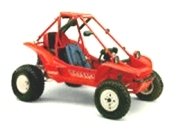
PilotOdyssey.com

 |
PilotOdyssey.com |
|
| It is currently Wed May 14, 2025 5:22 am |
|
All times are UTC - 5 hours [ DST ] |
 
|
Page 1 of 2 |
[ 34 posts ] | Go to page 1, 2 Next |
|
| Author | Message | ||||||
|---|---|---|---|---|---|---|---|
| hoser |
|
||||||
|
Joined: Mon Dec 15, 2003 2:40 pm Posts: 22617 Location: Chicago |
|
||||||
| Top | |
||||||
| King Kx |
|
|||
|
Joined: Wed Sep 29, 2004 4:48 pm Posts: 1037 Location: CT |
|
|||
| Top | |
|||
| hoser |
|
|||
|
Joined: Mon Dec 15, 2003 2:40 pm Posts: 22617 Location: Chicago |
|
|||
| Top | |
|||
| hoser |
|
|||
|
Joined: Mon Dec 15, 2003 2:40 pm Posts: 22617 Location: Chicago |
|
|||
| Top | |
|||
| King Kx |
|
|||
|
Joined: Wed Sep 29, 2004 4:48 pm Posts: 1037 Location: CT |
|
|||
| Top | |
|||
| hoser |
|
|||
|
Joined: Mon Dec 15, 2003 2:40 pm Posts: 22617 Location: Chicago |
|
|||
| Top | |
|||
| adnoh |
|
|||
|
Joined: Fri Jan 12, 2007 2:17 pm Posts: 3636 Location: Wichita ks |
|
|||
| Top | |
|||
| hoser |
|
|||
|
Joined: Mon Dec 15, 2003 2:40 pm Posts: 22617 Location: Chicago |
|
|||
| Top | |
|||
| adnoh |
|
|||
|
Joined: Fri Jan 12, 2007 2:17 pm Posts: 3636 Location: Wichita ks |
|
|||
| Top | |
|||
| adnoh |
|
|||
|
Joined: Fri Jan 12, 2007 2:17 pm Posts: 3636 Location: Wichita ks |
|
|||
| Top | |
|||
| hoser |
|
|||
|
Joined: Mon Dec 15, 2003 2:40 pm Posts: 22617 Location: Chicago |
|
|||
| Top | |
|||
| MassOdy |
|
|||
|
Joined: Sun Dec 21, 2003 11:24 am Posts: 805 Location: Bolton Ma |
|
|||
| Top | |
|||
| hoser |
|
|||
|
Joined: Mon Dec 15, 2003 2:40 pm Posts: 22617 Location: Chicago |
|
|||
| Top | |
|||
| MassOdy |
|
|||
|
Joined: Sun Dec 21, 2003 11:24 am Posts: 805 Location: Bolton Ma |
|
|||
| Top | |
|||
| hoser |
|
|||||
|
Joined: Mon Dec 15, 2003 2:40 pm Posts: 22617 Location: Chicago |
|
|||||
| Top | |
|||||
| hoser |
|
|||||
|
Joined: Mon Dec 15, 2003 2:40 pm Posts: 22617 Location: Chicago |
|
|||||
| Top | |
|||||
| hoser |
|
|||||
|
Joined: Mon Dec 15, 2003 2:40 pm Posts: 22617 Location: Chicago |
|
|||||
| Top | |
|||||
| hoser |
|
|||||
|
Joined: Mon Dec 15, 2003 2:40 pm Posts: 22617 Location: Chicago |
|
|||||
| Top | |
|||||
| hoser |
|
|||||
|
Joined: Mon Dec 15, 2003 2:40 pm Posts: 22617 Location: Chicago |
|
|||||
| Top | |
|||||
| hoser |
|
|||||
|
Joined: Mon Dec 15, 2003 2:40 pm Posts: 22617 Location: Chicago |
|
|||||
| Top | |
|||||
| hoser |
|
|||||
|
Joined: Mon Dec 15, 2003 2:40 pm Posts: 22617 Location: Chicago |
|
|||||
| Top | |
|||||
| hoser |
|
|||||
|
Joined: Mon Dec 15, 2003 2:40 pm Posts: 22617 Location: Chicago |
|
|||||
| Top | |
|||||
| hoser |
|
|||||
|
Joined: Mon Dec 15, 2003 2:40 pm Posts: 22617 Location: Chicago |
|
|||||
| Top | |
|||||
| hoser |
|
|||||
|
Joined: Mon Dec 15, 2003 2:40 pm Posts: 22617 Location: Chicago |
|
|||||
| Top | |
|||||
| mudbogger |
|
|||
|
Joined: Tue Dec 23, 2003 10:31 pm Posts: 5559 Location: New Jersey |
|
|||
| Top | |
|||
 
|
Page 1 of 2 |
[ 34 posts ] | Go to page 1, 2 Next |
|
All times are UTC - 5 hours [ DST ] |
Who is online |
Registered users: Bing [Bot], FL670R, Google [Bot] |
| You cannot post new topics in this forum You cannot reply to topics in this forum You cannot edit your posts in this forum You cannot delete your posts in this forum You cannot post attachments in this forum |